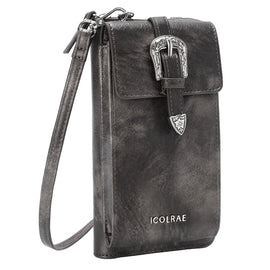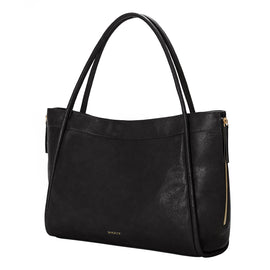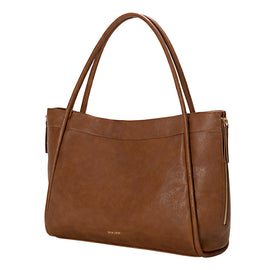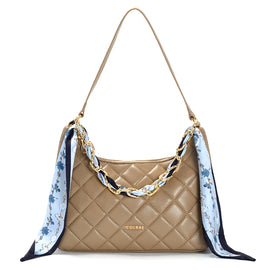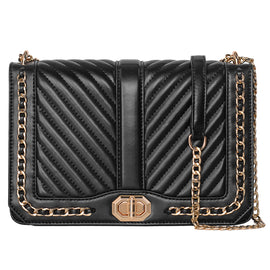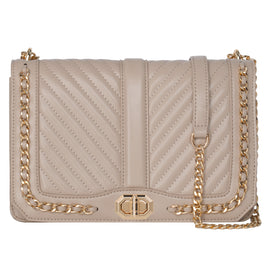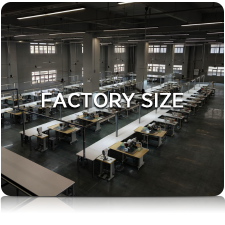What is a Dust Bag? A Comprehensive Guide to Protecting Your Valuables
In the world of fashion and luxury goods, preserving the pristine condition of your cherished items is paramount. Whether it’s a high-end handbag, a delicate pair of shoes, or a treasured accessory, safeguarding these possessions from dust, moisture, and physical damage is essential. This is where dust bags come into play. But what exactly is a dust bag, and why is it so important? In this detailed guide, we delve into the intricacies of dust bags, exploring their purpose, types, materials, and best practices for use and maintenance to help you keep your valuables in impeccable condition.
1. Understanding Dust Bags
Definition and Purpose
A dust bag is a protective cover designed to shield your belongings from dust, dirt, moisture, and potential damage during storage or transit. Typically made from soft, breathable fabrics, dust bags prevent particles from settling on surfaces while allowing air circulation to avoid mold and mildew buildup. They are indispensable for maintaining the quality and appearance of various items, particularly those made from delicate or sensitive materials.
Importance of Dust Bags
Using dust bags is not merely a matter of keeping your items clean; it plays a crucial role in extending their lifespan. Dust can act as an abrasive, scratching surfaces and causing wear over time. Moisture can lead to stains, discoloration, and even structural damage, especially in leather goods. By providing a barrier against these elements, dust bags help preserve the integrity and beauty of your valuables.
Key Benefits:
- Protection Against Dust and Dirt: Keeps your items free from surface grime and particles that can cause abrasion.
- Moisture Barrier: Prevents moisture from damaging materials, reducing the risk of mold and mildew.
- Preservation of Shape: Maintains the original shape and structure of bags, shoes, and other accessories.
- Enhanced Longevity: Extends the usable life of your items by minimizing wear and tear.
2. Types of Dust Bags
A. Fabric Dust Bags
Materials and Features
Fabric dust bags are the most common type, often made from materials like cotton, linen, or silk. These fabrics are chosen for their softness and ability to protect without causing scratches. Many high-end brands opt for luxurious fabrics that complement the aesthetics of their products.
Ideal For:
- Handbags: Protects against scratches and dust accumulation.
- Shoes: Keeps shoes clean and maintains their shape.
- Accessories: Ideal for scarves, belts, and other delicate items.
Example: A designer handbag comes with a silk dust bag that not only protects the bag but also reflects the brand’s elegance and attention to detail.
B. Leather Dust Bags
Materials and Features
Leather dust bags are crafted from genuine or faux leather, providing a more durable and stylish option. These bags are perfect for storing items that require extra protection against scratches and scuffs. Leather dust bags often feature high-quality finishes that match the luxurious nature of the items they protect.
Ideal For:
- High-End Leather Goods: Ensures bags remain free from scratches and maintains their polished appearance.
- Footwear: Protects leather shoes from dust and moisture.
- Structured Accessories: Ideal for items like clutches and briefcases.
Example: A premium pair of leather boots is stored in a sleek leather dust bag, ensuring they remain free from dust and retain their polished appearance.
C. Plastic Dust Bags
Materials and Features
Plastic dust bags offer a waterproof option for items that need protection from moisture. They are less breathable than fabric bags, so they are best used for items that are not susceptible to mold or mildew. Plastic dust bags are often transparent, allowing for easy identification of stored items.
Ideal For:
- Seasonal Clothing: Protects winter coats from moisture during off-seasons.
- Electronics: Shields devices from dust and accidental spills.
- Outdoor Gear: Keeps items like camping equipment dry and clean.
Example: Winter coats are placed in plastic dust bags to protect them from moisture and prevent fabric deterioration during off-seasons.
D. Custom Dust Bags
Materials and Features
Custom dust bags are tailored to fit specific products, often incorporating branded elements like logos and unique designs. These bags offer personalized protection and enhance the unboxing experience for customers. Custom dust bags can be made from various materials, depending on the level of protection and aesthetic desired.
Ideal For:
- Branded Merchandise: Enhances brand identity and presentation.
- Limited Edition Items: Adds exclusivity and uniqueness.
- Personalized Gifts: Offers a bespoke touch for special occasions.
Example: A luxury brand creates custom dust bags with their signature logo embroidered, adding a touch of exclusivity and brand recognition.
3. Materials Used in Dust Bags
A. Cotton
Cotton dust bags are soft, breathable, and gentle on delicate fabrics. They are an excellent choice for everyday use, providing effective protection without adding bulk.
Benefits:
- Breathability: Prevents moisture buildup, reducing the risk of mold.
- Softness: Protects items from scratches and abrasions.
- Versatility: Suitable for a wide range of products.
B. Linen
Linen offers a slightly more rigid structure compared to cotton, making it suitable for items that require a bit more support during storage. It is also highly breathable and resistant to moisture.
Benefits:
- Durability: More resistant to wear and tear than cotton.
- Texture: Adds a touch of elegance and sophistication.
- Air Circulation: Helps maintain the condition of stored items.
C. Silk
Silk dust bags are luxurious and perfect for high-end items. They add an extra layer of protection while enhancing the overall presentation of the product.
Benefits:
- Luxury Aesthetic: Elevates the presentation of high-end goods.
- Softness: Extremely gentle on delicate materials.
- Breathable: Prevents moisture accumulation.
D. Leather and Faux Leather
These materials provide robust protection against scratches and minor impacts. Leather dust bags are particularly favored for their durability and stylish appearance.
Benefits:
- Durability: Long-lasting protection against physical damage.
- Aesthetic Appeal: Matches the look and feel of leather goods.
- Protection: Shields items from dust, moisture, and scratches.
E. Plastic and PVC
Plastic dust bags are waterproof and ideal for protecting items from moisture and humidity. However, they are less breathable, so they should be used sparingly to prevent mold growth.
Benefits:
- Waterproofing: Protects against moisture and spills.
- Visibility: Transparent options allow easy identification of contents.
- Protection: Guards against dust and accidental damage.
4. Best Practices for Using Dust Bags
A. Proper Storage
Always place your items in dust bags immediately after use. For handbags and shoes, stuffing them with tissue paper can help maintain their shape while in the dust bag.
Tips:
- Maintain Shape: Use tissue paper or shoe trees to keep items in their original form.
- Avoid Overcrowding: Ensure items fit snugly without being cramped to prevent deformation.
B. Clean Regularly
Dust bags themselves can accumulate dust and debris over time. Clean them periodically according to the manufacturer’s instructions to ensure they continue to provide effective protection.
Tips:
- Fabric Bags: Can often be machine-washed on a gentle cycle or hand-washed with mild detergent.
- Leather Bags: Wipe with a damp cloth and condition the leather to keep it supple.
- Plastic Bags: Wipe down with a damp cloth and mild soap if needed.
C. Avoid Overcrowding
Ensure that the dust bag is appropriately sized for the item. Overcrowding can cause wrinkles and damage the item inside, while too much empty space can allow dust to settle more easily.
Tips:
- Choose the Right Size: Select a dust bag that fits the item snugly without compressing it.
- Organize Multiple Items: If storing multiple items, use separate dust bags to prevent overcrowding.
D. Store in a Cool, Dry Place
Store dust bags in environments that are free from excessive heat, humidity, and direct sunlight. These conditions can degrade both the dust bag and the items it protects.
Tips:
- Climate Control: Keep storage areas temperature-controlled to avoid damage from extreme conditions.
- Away from Sunlight: Store items away from windows or use UV-protective covers to prevent fading and deterioration.
5. Choosing the Right Dust Bag
A. Consider the Material of Your Item
Different materials require different levels of protection. For example, delicate silk scarves benefit from soft cotton or silk dust bags, while sturdy leather handbags might require more robust leather or fabric options.
Tips:
- Match the Material: Choose a dust bag material that complements the item's fabric to avoid damage.
B. Assess the Size and Shape
Ensure the dust bag fits your item snugly without causing compression. A well-fitted dust bag maintains the shape of your item and prevents unnecessary movement that can lead to wear and tear.
Tips:
- Measure Your Item: Take accurate measurements to select the right dust bag size.
- Shape-Specific Bags: Some dust bags are designed for specific shapes, such as clutches or totes, offering a better fit.
C. Look for Breathability
Breathable materials like cotton and linen are ideal for most items as they prevent moisture buildup while protecting from dust.
Tips:
- Choose Breathable Fabrics: Opt for cotton or linen dust bags to ensure air circulation.
6. FAQs about Dust Bags
Q1: Are dust bags washable?
Yes, most fabric dust bags can be washed, but it's important to check the care instructions first. Cotton and linen bags are generally machine washable, while leather and plastic bags may require spot cleaning.
Q2: Can I use a dust bag for shoes?
Absolutely! Dust bags are ideal for shoes as they protect them from dust and moisture. For added protection, consider using a shoe tree to help maintain their shape.
Q3: How do I prevent mold in dust bags?
To avoid mold buildup, store your items in a cool, dry environment and ensure the dust bag is breathable. Avoid storing wet items in dust bags and clean them regularly.
Q4: Can I use a dust bag for all types of clothing?
Yes, dust bags can be used for clothing, particularly seasonal items or delicate fabrics that require protection from dust and dirt.
Q5: Do I need a dust bag for all my luxury items?
While it's not mandatory, using dust bags for luxury items, such as handbags, shoes, and accessories, helps preserve their condition and extends their lifespan.
Q6: How can I keep my dust bags looking new?
Regularly clean your dust bags according to their material, avoid overstuffing, and store them in a dry, cool place to prevent deterioration.
Conclusion
Dust bags are essential for the protection and preservation of your cherished items. Whether you're safeguarding a luxury handbag, a pair of shoes, or any other valuable possession, choosing the right dust bag ensures that your belongings remain in excellent condition for years to come. With a wide variety of materials and styles available, it's easier than ever to find the perfect dust bag to suit your needs. Don't underestimate the power of this simple but effective accessory – it could be the key to maintaining the quality and value of your most treasured items.


